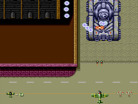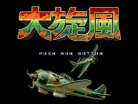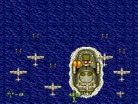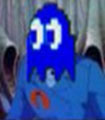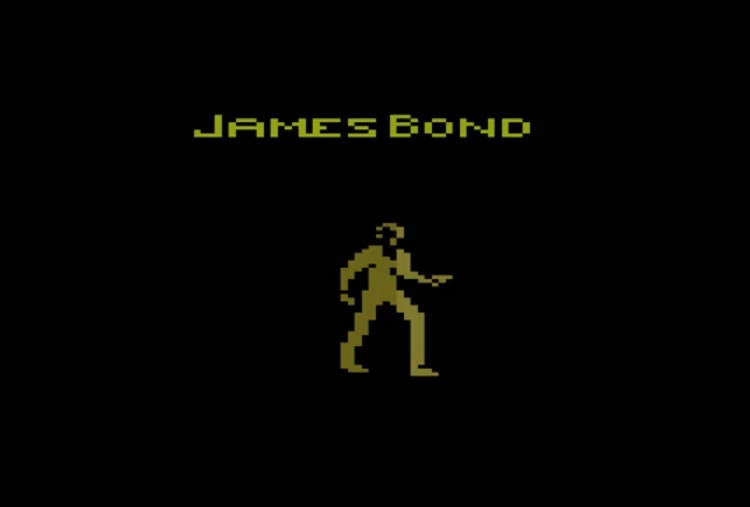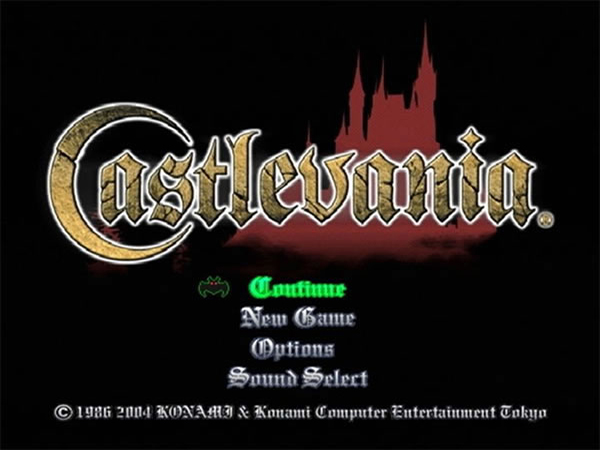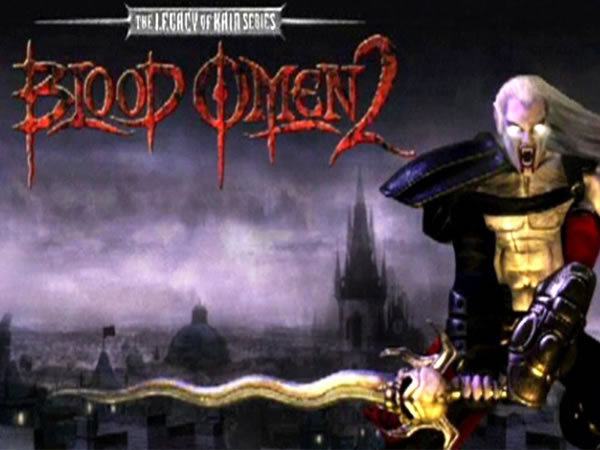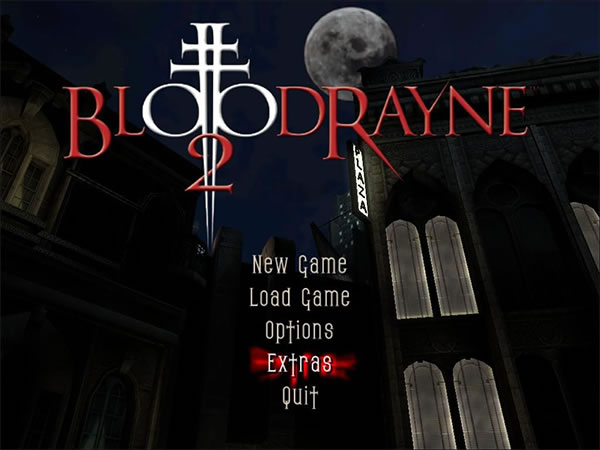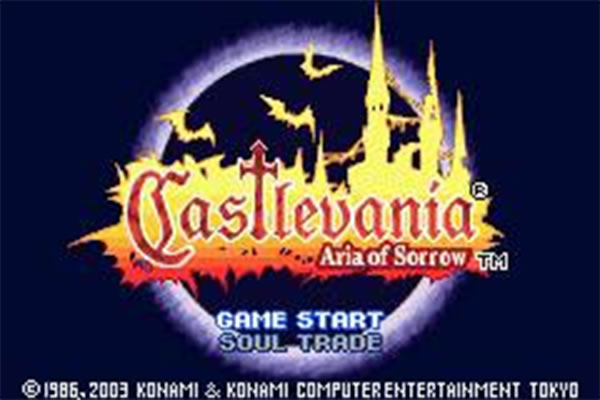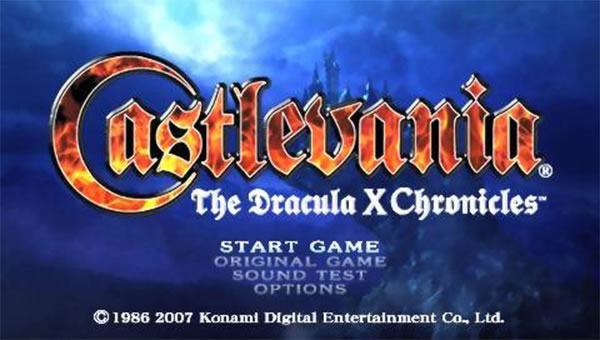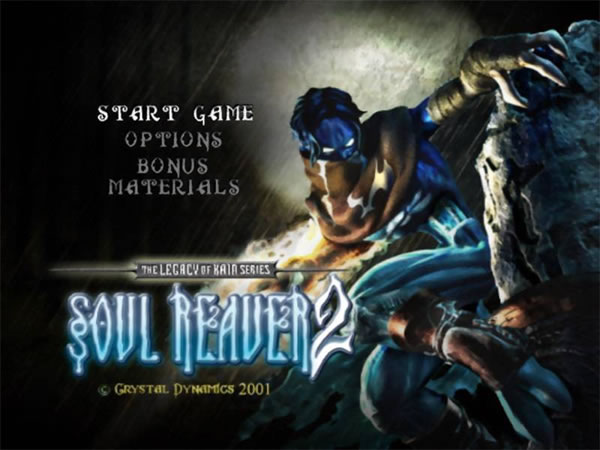- CLASSIC MAGAZINES
- REVIEW CREW
A show recapping what critics thought back
when classic games first came out! - NEXT GENERATION'S BEST & WORST
From the worst 1-star reviews to the best
5-stars can offer, this is Next Generation! - NINTENDO POWER (ARCHIVE)
Experience a variety of shows looking at the
often baffling history of Nintendo Power! - MAGAZINE RETROSPECTIVE
We're looking at the absolutely true history of
some of the most iconic game magazines ever! - SUPER PLAY'S TOP 600
The longest and most ambitious Super NES
countdown on the internet! - THEY SAID WHAT?
Debunking predictions and gossip found
in classic video game magazines! - NEXT GENERATION UNCOVERED
Cyril is back in this spin-off series, featuring the
cover critic review the art of Next Generation! - HARDCORE GAMER MAGAZING (PDF ISSUES)
Download all 36 issues of Hardcore Gamer
Magazine and relive the fun in PDF form!
- REVIEW CREW
- ELECTRONIC GAMING MONTHLY
- ELECTRONIC GAMING MONTHLY RANKS
From Mario to Sonic to Street Fighter, EGM
ranks classic game franchises and consoles! - ELECTRONIC GAMING MONTHLY BEST & WORST
Counting down EGM’s best and worst reviews
going year by year, from 1989 – 2009! - ELECTRONIC GAMING BEST & WORST AWARDS
11-part video series chronicling the ups and
downs of EGM’s Best & Worst Awards!
- ELECTRONIC GAMING MONTHLY RANKS
- GAME HISTORY
- GAME OVER: STORY BREAKDOWNS
Long-running series breaking down game
stories and analyzing their endings! - A BRIEF HISTORY OF GAMING w/ [NAME HERE]
Real history presented in a fun and pithy
format from a variety of game historians! - THE BLACK SHEEP
A series looking back at the black sheep
entries in popular game franchises! - INSTANT EXPERT
Everything you could possibly want to know
about a wide variety of gaming topics! - FREEZE FRAME
When something familiar happens in the games
industry, we're there to take a picture! - I'VE GOT YOUR NUMBER
Learn real video game history through a series
of number-themed episodes, starting at zero! - GREAT MOMENTS IN BAD ACTING
A joyous celebration of some of gaming's
absolute worst voice acting!
- GAME OVER: STORY BREAKDOWNS
- POPULAR SHOWS
- DG NEWS w/ LORNE RISELEY
Newsman Lorne Riseley hosts a regular
series looking at the hottest gaming news! - REVIEW REWIND
Cyril replays a game he reviewed 10+ years
ago to see if he got it right or wrong! - ON-RUNNING FEUDS
Defunct Games' longest-running show, with
editorials, observations and other fun oddities! - DEFUNCT GAMES QUIZ (ARCHIVE)
From online quizzes to game shows, we're
putting your video game knowledge to the test!- QUIZ: ONLINE PASS
Take a weekly quiz to see how well you know
the news and current gaming events! - QUIZ: KNOW THE GAME
One-on-one quiz show where contestants
find out if they actually know classic games! - QUIZ: THE LEADERBOARD
Can you guess the game based on the classic
review? Find out with The Leaderboard!
- QUIZ: ONLINE PASS
- DEFUNCT GAMES VS.
Cyril and the Defunct Games staff isn't afraid
to choose their favorite games and more! - CYRIL READS WORLDS OF POWER
Defunct Games recreates classic game
novelizations through the audio book format!
- DG NEWS w/ LORNE RISELEY
- COMEDY
- GAME EXPECTANCY
How long will your favorite hero live? We crunch
the numbers in this series about dying! - VIDEO GAME ADVICE
Famous game characters answer real personal
advice questions with a humorous slant! - FAKE GAMES: GUERILLA SCRAPBOOK
A long-running series about fake games and
the people who love them (covers included)! - WORST GAME EVER
A contest that attempts to create the worst
video game ever made, complete with covers! - LEVEL 1 STORIES
Literature based on the first stages of some
of your favorite classic video games! - THE COVER CRITIC
One of Defunct Games' earliest shows, Cover
Critic digs up some of the worst box art ever! - COMMERCIAL BREAK
Take a trip through some of the best and
worst video game advertisements of all time! - COMIC BOOK MODS
You've never seen comics like this before.
A curious mix of rewritten video game comics!
- GAME EXPECTANCY
- SERIES ARCHIVE
- NINTENDO SWITCH ONLINE ARCHIVE
A regularly-updated list of every Nintendo
Switch Online release, plus links to review! - PLAYSTATION PLUS CLASSIC ARCHIVE
A comprehensive list of every PlayStation
Plus classic release, including links! - RETRO-BIT PUBLISHING ARCHIVE
A regularly-updated list of every Retro-Bit
game released! - REVIEW MARATHONS w/ ADAM WALLACE
Join critic Adam Wallace as he takes us on a
classic review marathon with different themes!- DEFUNCT GAMES GOLF CLUB
Adam Wallace takes to the links to slice his way
through 72 classic golf game reviews! - 007 IN PIXELS
Adam Wallace takes on the world's greatest spy
as he reviews 15 weeks of James Bond games! - A SALUTE TO VAMPIRES
Adam Wallace is sinking his teeth into a series
covering Castlevania, BloodRayne and more! - CAPCOM'S CURSE
Adam Wallace is celebrating 13 days of Halloween
with a line-up of Capcom's scariest games! - THE FALL OF SUPERMAN
Adam Wallace is a man of steel for playing
some of the absolute worst Superman games! - THE 31 GAMES OF HALLOWEEN
Adam Wallace spends every day of October afraid
as he reviews some of the scariest games ever! - 12 WEEKS OF STAR TREK
Adam Wallace boldly goes where no critic has
gone before in this Star Trek marathon!
- DEFUNCT GAMES GOLF CLUB
- DAYS OF CHRISTMAS (ARCHIVE)
Annual holiday series with themed-episodes
that date all the way back to 2001!- 2015: 30 Ridiculous Retro Rumors
- 2014: 29 Magazines of Christmas
- 2013: 29 Questionable Power-Ups of Christmas
- 2012: 34 Theme Songs of Christmas
- 2011: 32 Game Endings of Christmas
- 2010: 31 Bonus Levels of Christmas
- 2009: 30 Genres of Christmas
- 2008: 29 Controls of Christmas
- 2007: 34 Cliches of Christmas
- 2006: 33 Consoles of Christmas
- 2005: 32 Articles of Christmas
- 2004: 31 Websites of Christmas
- 2003: 29 Issues of Christmas
- 2002: 28 Years of Christmas
- 2001: 33 Days of Christmas
- NINTENDO SWITCH ONLINE ARCHIVE
- REVIEW ARCHIVE
- FULL ARCHIVE
Dai Sen Pu
Trying to review a shoot-em-up is like trying to explain a knock-knock joke. Most people already know the premise and the format rarely changes. How much can one say about moving a sprite across a scrolling backdrop while shooting at other moving sprites? It's basic math: x (enemy sprite) plus negative x (projectile) equals zero (explosion).
Dai Sen Pu ("Great Swirling Wind") does very little to change the old formula, and so it does not show up on anyone's shortlist of great shooters. But this is not to say that the game isn't interesting. In fact, the game is a little too interesting if you look at it closely enough.
This World-War-II-styled shooter is standard fare with a few anomalies. Unlike 1943, P-17, and Strikers 1945, there are absolutely no airborne enemies. Your enemy, whoever it is, cannot afford a counter air strike. So, essentially, you strafe your way past tanks, ships, and stationary anti-aircraft turrets, and since everything is a few hundred meters beneath you, never will need to concern yourself with mid-air collisions. Additionally, your enemies are also nice enough not to approach you from behind (with the exception of two small boats). Most enemies you can disable without destroying, which saves you on effort even if you lose a few points.
Your special attack summons six wingmen to flank your craft, each resembling a Mitsubishi Zero with its wings sweeping slightly forward toward a single engine propeller. Once your flight formation is set, your spread of fire covers the majority of the screen and much of your success will depend on when you decide to call upon these powerful reinforcements.
Now for the weird and noteworthy part. If you hit the special attack button again, each of your remaining wingmen will crash themselves into enemy aircraft, obliterating themselves and their targets. Considering that this game comes out of Japan, this seems woefully inappropriate. It is therefore not surprising that Dai Sen Pu didn't make it way to the U.S., the country that suffered the worst losses in World War II from kamikaze attacks (estimated at 26 sunk ships in total).
Maybe the programmers didn't see the improper nature of their special attack feature, but even the game's title hints at a connection to the infamous suicide pilots of the East. The "pu" of Dai Sen Pu means "wind" and is represented by a very specific kanji character. This character can also be pronounced as "kaze" - the second half of the word "kamikaze" ("divine wind"). So, in essence, the game could also be pronounced "Dai Sen Kaze" which gives it a more obvious historical connotation to the average gamer.
Westerners have often been critical of Japanese schoolbooks that gloss over their country's role in WWII, claiming the texts give slight treatment to their people as aggressors in favor of showing them primarily as victims by focusing on the bombings of Hiroshima and Nagasaki. Recently however, Japanese artists, teachers, and intellectuals, have also been critical of Japan's selective memory, and recently some have been more vocal in honestly examining their country's role in the conflict. One writer, Masayuki Imai, wrote a play, "The Winds of God," because, in his own words, "the subject of kamikaze was forbidden" in school. Perhaps the creators of this simple video game also felt a desire to address this taboo subject; in this case, they may have subtly inserted these sacrificial planes into the game as either homage or as criticism. We may never know without further study.
Dai Sen Pu was released in Europe for the Sega Mega Drive under the name Twin Hawk, but I doubt that it the game will ever surface on the Wii's Virtual Console under either name. Not only is it an average shooter, it may cause a bit of controversy.
Dai Sen Pu ("Great Swirling Wind") does very little to change the old formula, and so it does not show up on anyone's shortlist of great shooters. But this is not to say that the game isn't interesting. In fact, the game is a little too interesting if you look at it closely enough.
This World-War-II-styled shooter is standard fare with a few anomalies. Unlike 1943, P-17, and Strikers 1945, there are absolutely no airborne enemies. Your enemy, whoever it is, cannot afford a counter air strike. So, essentially, you strafe your way past tanks, ships, and stationary anti-aircraft turrets, and since everything is a few hundred meters beneath you, never will need to concern yourself with mid-air collisions. Additionally, your enemies are also nice enough not to approach you from behind (with the exception of two small boats). Most enemies you can disable without destroying, which saves you on effort even if you lose a few points.
Your special attack summons six wingmen to flank your craft, each resembling a Mitsubishi Zero with its wings sweeping slightly forward toward a single engine propeller. Once your flight formation is set, your spread of fire covers the majority of the screen and much of your success will depend on when you decide to call upon these powerful reinforcements.
Now for the weird and noteworthy part. If you hit the special attack button again, each of your remaining wingmen will crash themselves into enemy aircraft, obliterating themselves and their targets. Considering that this game comes out of Japan, this seems woefully inappropriate. It is therefore not surprising that Dai Sen Pu didn't make it way to the U.S., the country that suffered the worst losses in World War II from kamikaze attacks (estimated at 26 sunk ships in total).
Maybe the programmers didn't see the improper nature of their special attack feature, but even the game's title hints at a connection to the infamous suicide pilots of the East. The "pu" of Dai Sen Pu means "wind" and is represented by a very specific kanji character. This character can also be pronounced as "kaze" - the second half of the word "kamikaze" ("divine wind"). So, in essence, the game could also be pronounced "Dai Sen Kaze" which gives it a more obvious historical connotation to the average gamer.
Westerners have often been critical of Japanese schoolbooks that gloss over their country's role in WWII, claiming the texts give slight treatment to their people as aggressors in favor of showing them primarily as victims by focusing on the bombings of Hiroshima and Nagasaki. Recently however, Japanese artists, teachers, and intellectuals, have also been critical of Japan's selective memory, and recently some have been more vocal in honestly examining their country's role in the conflict. One writer, Masayuki Imai, wrote a play, "The Winds of God," because, in his own words, "the subject of kamikaze was forbidden" in school. Perhaps the creators of this simple video game also felt a desire to address this taboo subject; in this case, they may have subtly inserted these sacrificial planes into the game as either homage or as criticism. We may never know without further study.
Dai Sen Pu was released in Europe for the Sega Mega Drive under the name Twin Hawk, but I doubt that it the game will ever surface on the Wii's Virtual Console under either name. Not only is it an average shooter, it may cause a bit of controversy.
HOME |
CONTACT |
NOW HIRING |
WHAT IS DEFUNCT GAMES? |
NINTENDO SWITCH ONLINE |
RETRO-BIT PUBLISHING
Retro-Bit |
Switch Planet |
The Halcyon Show |
Same Name, Different Game |
Dragnix |
Press the Buttons
Game Zone Online | Hardcore Gamer | The Dreamcast Junkyard | Video Game Blogger
Dr Strife | Games For Lunch | Mondo Cool Cast | Boxed Pixels | Sega CD Universe | Gaming Trend
Game Zone Online | Hardcore Gamer | The Dreamcast Junkyard | Video Game Blogger
Dr Strife | Games For Lunch | Mondo Cool Cast | Boxed Pixels | Sega CD Universe | Gaming Trend
Copyright © 2001-2025 Defunct Games
All rights reserved. All trademarks are properties of their respective owners.
All rights reserved. All trademarks are properties of their respective owners.






